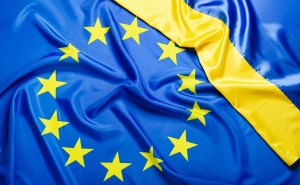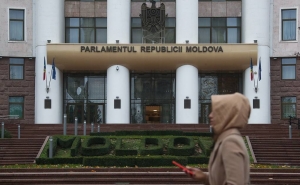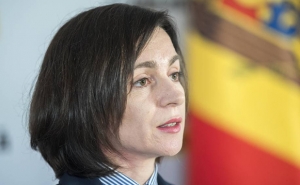The Moldovan Capital Was "Decided" by an Armenian Bribe

Have you ever wondered why one of the central streets of Chisinau got the name "Armenian"? The answer is simple and hidden right in its name. Armenians settled in Moldova in the 14th century and, according to some sources, even in the Middle Ages. They mainly migrated here from Crimea.
In 1401 an Armenian bishopric was founded in Suchava. The Armenians settled in the towns of Sorok, Bender, Chisinau, Kaushan, and later in 1792, at the site of the Armenian settlement of Chorna, they set up the city of Grigoriupolis (the city is now situated in Transdniestria), the construction project of which was approved by the Empress Catherine the 2nd. According to one of the versions, the city got its name in the honor of Grigor Lusavorich.
In 1818, when Chisinau gained city status, Angel Noure became the first mayor of the city. Due to this status, Chisinau became the center of the province of Bessarabia in the Russian Empire. However, it turned out that local Armenians made a contribution to getting Chisinau's status as a city, making it the center of Bessarabia (later Moldova). According to some sources, all this became possible thanks to the Armenian merchants of Bessarabia. It was them who bribed the representatives of the Russian regime, thanks to which Chisinau was granted a city status. Due to the Armenian merchants, Chisinau stepped forward from Bender, becoming the center of the region.
Chisinau, the center of Bessarabia, also becomes a center for consolidating Armenians in the region. Already in 1830, the Armenian Diocese of Bessarabia and the New Nakhijevan Diocese are being set up, the center of which becomes Chisinau again. The diocese included the Don Territories, the Crimea, Malorussia and Novorussia, Moscow and St. Petersburg. In 1895, the diocesan center became New Nakhichevan, and as a result, the role of Chisinau and the Armenian community became relatively low. According to data of 1897, 427 followers of Armenian Apostolic Church and 6 Armenian Catholics resided in Kishinev.
The Armenian community of Moldova enjoyed certain privileges. The representatives of the rich class had the right to hold state positions, to carry noble titles. In Moldova, Armenians mostly were engaged in trade and various crafts. In Chisinau they were mainly cigarette fabricants. In addition, most of the city's barbers were also Armenians.
The Armenian national liberation movement activist, then the leader of the Armenian Diocese of Bessarabia, later the Spiritual leader of All Armenians Nerses Ashtaraketsi, lived and acted in Moldova for many years. Archbishop Gabriel Ayvazyan, the brother of the celebrated painter Hovhannes Aivazovsky, also used to live in Moldova, as well as the poet Harutyun Alamdaryan and many others.
Perhaps the most prominent representative of the Armenian community in Moldova was Manouk Bey Mirzayan, a prominent merchant, landowner, diplomat who had been awarded by the Turkish authorities with the ‘’Bey’’ title, had been also awarded with orders for invaluable services to the Russian Empire. Throughout the Russian-Turkish war, Manouk Bey assumed the role of a mediator in the talks, and in 1812, The Russian-Turkish reconciliation agreement was signed in one of Bucharest's hotels. In 1813, he moved from Bucharest to Transylvania, then to Chisinau. He founded the town of Hnchesht, where his fortress was located. Mirzayan also contributed greatly to Moldovan winemaking as a French technology investor.
Manouk Bey also visited Armenia and provided financial support to the Church of the Holy Cross in Echmiadzin, as well as in Mush, Jerusalem and other monasteries. Near the Armenian Church of Bucharest in 1817 he founded the first Armenian school in Romania.
Armenian community today:
The street named "Armenian" (Armeneasca) has been preserved in Chisinau up to now. The Armenian community has left a great cultural heritage in Moldova. The monastery of Saint Astvatsatsin (1804) the church of Resurrection of Christ (1915) are still there and serve people. Chisinau’s oldest Armenian cemetery has also been preserved.
The Armenian community has been reborn since the early 1990's. At present, there are 9-12000 Armenians living in Moldova, who actively participate in the economic and cultural life of the republic. In Chisinau there is an Armenian Sunday School, the ‘’Ani’’ Center of Armenian Culture, which goal is to preserve Armenian traditions and Armenian architectural monuments.
-
 17:08
17:08The regular session of the Anti-corruption Policy Council takes place in Jermuk
-
 15:05
15:05The Prime Minister sends congratulatory messages to the supreme leader of Iran and the President of Iran
-
 11:11
11:11Armenia sends earthquake aid to Turkey
-
 10:43
10:43Commemoration of the Pontiff St. Sahak Partev
-
 09:16
09:16Some roads are closed and difficult to pass in Armenia
-
 19:55
19:55Phone conversation of the Foreign Minister of Armenia with the U.S. Assistant Secretary of State for European and Eurasian Affairs
-
 18:30
18:30Prime Minister Pashinyan and President Khachaturyan meet
-
 18:20
18:20Ararat Mirzoyan with Co-Chairman of the OSCE Minsk Group of France Brice Roquefeuil
-
 17:01
17:01Humans could land on Mars within 10 years, Musk predicts
-
 16:45
16:45France, US urge 'immediate' end to Nagorno Karabakh blockade
-
 16:01
16:01Blockaded Nagorno Karabakh launches fundraiser to support quake-hit Syria
-
 15:59
15:59Earthquake death toll in Turkey rises to 18,342
-
 15:43
15:43Ararat Mirzoyan Held a Telephone Conversation with Sergey Lavrov
-
 15:06
15:06French president rules out fighter jet supplies to Ukraine in near future
-
 14:47
14:475 Day Weather Forecast in Armenia
-
 14:44
14:44President Vahagn Khachaturyan wrote a note in the book of condolences opened in the Embassy of Syria in Armenia
-
 14:20
14:20Azerbaijan’s provocations impede establishment of peace and stability – Armenian FM tells Russian Co-Chair of OSCE MG
-
 12:57
12:57France representation to OSCE: Paris calls on Azerbaijan to restore freedom of movement through Lachin corridor
-
 11:40
11:40Command of Kosovo forces highly appreciated preparation of Armenian peacekeepers
-
 10:16
10:16The United States withdrew from sanctions against Syria for six months the provision of assistance after the earthquake
day
week
month
Humidity: 34%
Wind: 1.54 km/h









